
































There’s always been a taste for antique furnishings. These days, a widely acquired taste.
Antiques are hot partly because of supply chain delays and higher prices for many custom or mass-market pieces. There’s also the public’s turn toward sustainability: Environmentally-conscious buyers are averse to throwaway furniture, and are trying to reuse and recycle.
And as always, pop culture plays a role. Period-specific shows like “Bridgerton,” “Downton Abbey” and “Outlander” have given the styles of bygone eras a romantic glow. “Mad Men” stoked a hot market in midcentury modern furniture. And designers cite renewed interest in ’70s and ’80s decor, too.
It’s all led to crowds of designers and regular people at auctions, antique shops and estate sales. Online platforms, like vintage furniture retailer Chairish and collectibles site 1stDibs, also say sales are up.
The good news from a design perspective is that it’s easy and trendy to blend antiques into any room and mix them with pieces from any era, designers say.
A classic 18th century cherry dresser might be given glamorous, brushed-copper modern handles. A curvy ’60s floor lamp might light a room wrapped in prim Laura Ashley wallpaper.
More 20th century vintage pieces are popping up, whether it’s a finely carved Edwardian side table, a Le Corbusier chaise, a Pop Art-era mirror, or something as charming and small as a vintage book or ceramic.
The variety of old stuff is
swelling beyond the boundaries of “traditional” décor. And a mix creates interesting stories in a room.
Designers who became famous for expertly blending periods include Billy Baldwin, whom Architectural Digest called “America’s dean of interior decoration in the 1950s and 1960s.” He created swanky homes for society figures, and favored a mix of modern and antique furniture. Baldwin said an older piece ‘”gives a room flavor.”
Jay Spectre, known for sleek, dramatic interiors, was enamored of Art Deco. And female decorators like Elsie de Wolfe and Sister Parish excelled at giving elegant, turn-ofthe-century European furniture room to breathe in light-filled modern spaces.
Today, designer Kelly Wearstler, for instance, brings an adventurous style to homes as well as to boutique hotels.
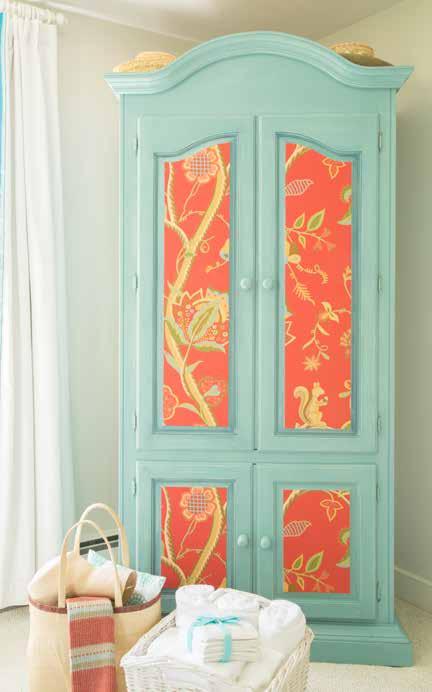
“My aesthetic is about mixology; always something old and something new, raw and refined, masculine and feminine,” she says.
Georgia Zikas, a designer in West Hartford, Connecticut, says modern art and an achromatic rug create a nice foundation for mixed furniture styles and dispel any dowdiness.
An example of an easy update: One of Zikas’ clients had a beautiful pair of vintage, crystal, Waterford lamps from her mother. They replaced the dated pleated shades with crisp, white, tapered ones.
Different parts of the country seem to lean in certain directions concerning antiques.
“For example, in the South, where I’m based, French antiques are most coveted because of our historically French heritage,” says Lance Thomas, lead designer at Thomas Guy Interiors in Lake Charles, Louisiana.

“I’ve found that coastal cities like West Palm Beach in Florida, and Malibu in California, gravitate toward vintage and antique Italian contemporary pieces. The Midwest leans toward American antiques.”
Thomas says more clients than ever are asking for antiques. He and his team recently took a two-week buying trip to France to seek them out.
If you’re purchasing antiques sight unseen, Thomas says, use a reliable auction site.
“There are some very good fakes, and reproductions that would fool even the most experienced buyers,” he says. “A reputable auction site will usually vet and list whether or not the item is authentic.”
Some of his tips for identifying true antiques: With mirrors, “pay attention to spotting. Old mirrors were made of tin and mercury or silver, and over time have oxidized to create a waviness and splotching on the front. This patina is a good sign that it’s an antique.”
For cabinets and dressers, check how well they’re constructed. Look at the back of the piece, where it’s less likely to be painted. “Are there dovetail joints rather than wellhidden Phillips screws? And look for the hinging mechanisms — are they hand-forged or machine-made?” says Thomas.
Carved and painted details can help confirm a piece’s age because they indicate the furniture-making capabilities of the era.
“Many pieces in the 18th century will have similar embellishments to those of their 20th century counterparts. But the precision and exactness improved drastically
between these two time periods,” says Thomas. Curvy floral details, for example, probably won’t be as rounded on an 18th century piece, because they didn’t have the tools to create a perfect curve.
Beau Ciolino, who with Matt Armato wrote the new book “Probably This Housewarming” (Abrams), recommends the website www.estatesales.net to get alerts about sales in your area.
“The best part about antiquing is that it can be so accessible,” says Ciolino. “While the old-school auction houses have a reputation
The kitchen may be the heart of a home, but when it comes to entertaining, a dining room — if one is present in a house — tends to be the prime gathering spot for meals.
Dining rooms may not be top on the list of spaces to renovate, as they tend to be used infrequently. But a dining room makeover may still be a worthy endeavor. Here are some simple ways to make the dining room more elegant and functional.
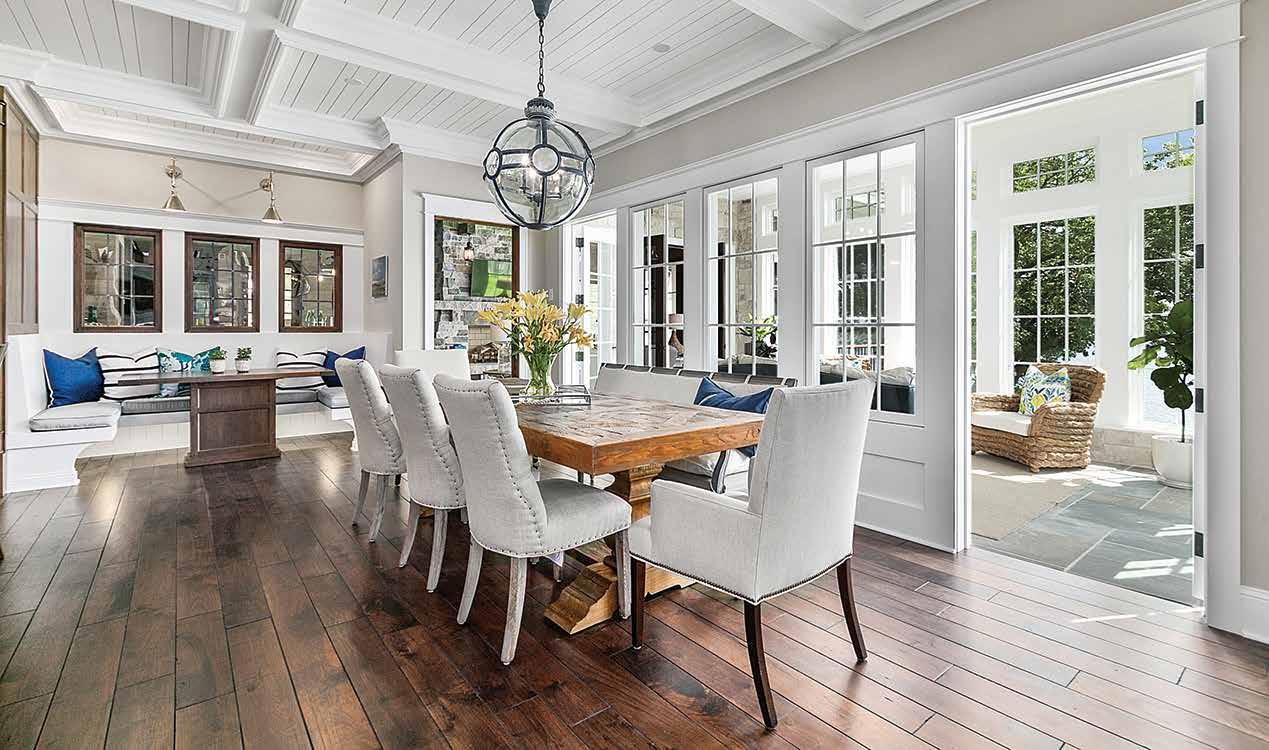
• Clear out the clutter. The first step toward improving a dining room eating area is to remove any extraneous items from the
space. If the dining room table is not used very often, it likely has become a catch-all for other items, such as bills, newspapers or kids’ homework. Rather than using the dining space as a makeshift office or homework station, invest in a rolling cart to store those papers and other items. Simply roll it into a closet or another room when it’s time to host a party.
• Hang a statement light. Few decorative items add as much drama and ambiance to a dining space as a new overhead light. People hear chandelier and think a bejeweled or crystal design. But various chandelier styles can fit the
aesthetic of a home. The light will be a focal point and instantly make the dining area more elegant. Install the light on a dimmer to adjust the illumination as needed to set the mood.
• Invest in new linens. Purchase coordinating table linens that will be used for special occasions. A decorative table cloth or table runner coupled with cloth napkins and placemats helps to set the scene of the dinner party.
• Add a piece of artwork. Many modern homeowners have eschewed the China cabinet that once was standard in dining
rooms. Rather than a bulky piece of furniture, a large piece of statement-making artwork or framed photos over a more minimalistic buffet table or small service bar is preferable. Choose artwork that complements the colors in the space.
• Include a centerpiece. Centerpieces add sophistication to the table and tie into the event. Floral arrangements, a bowl or basket of fruit, pine cones or greens from outdoors, or collectibles like shells in a tall canister can serve as centerpieces.






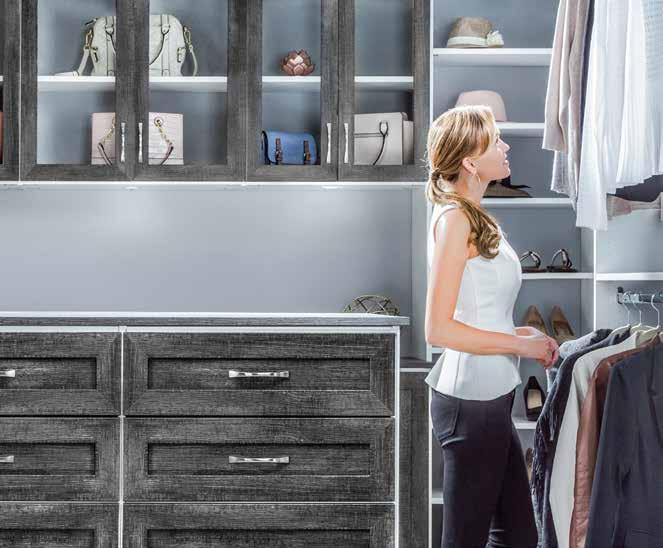
Many homeowners express interest in creating fewer barriers between the interior and exterior of their homes. Some may have backyards built for entertaining and want to facilitate the transition between the inside of the residence and the outside when guests arrive. In other instances, homes may back to a nature preserve that homeowners want to enjoy more readily. Whatever the reason for bringing the outside in, all-season rooms can serve as a welcoming bridge between indoor and outdoor spaces.
Also known as a four-season room, all-season rooms are specially engineered spaces that provide a connection to the outdoors no matter the season. They are like sunrooms, but climate-controlled so that they will be comfortable throughout winter, spring, summer, and fall. What is the difference between a three-season room and an all-season room?

The biggest difference between these two spaces is the level of usage and the capacity of the room to be heated and cooled. Individuals who reside in climates with moderate yearround temperatures may get by with a three-season room. However, those who experience all four seasons may need a more insulated space to make the room usable throughout the year.
One of the more notable
features of an all-season room is an abundance of windows, which allow plenty of natural light to shine in. All-season rooms also can feature creature comforts like a reading nook, outdoor kitchen spaces and televisions. Retractable screens can be installed when privacy or shade is desired.
All-season rooms can be built with adequate thermal insulation and energy-saving features. Insulation will be installed in the walls and roof, and homeowners may have a choice of window ratings for efficiency. Some all-season rooms are specially equipped with HVAC systems that may or may not be tied in to the home’s general heating and cooling system. Some people use portable heaters or air conditioners to control the temperature in all-season rooms. It’s best to speak with an allseason room contractor to identify heating and cooling needs. How much does an allseason room cost?
Prices vary by region and are contingent on the features homeowners desire. According to the outdoor resource Garden Center Care, a three-season room can cost anywhere from $8,000 to $50,000 to build. A four-season room can cost $20,000 to $80,000 to add. If there is an existing threeseason room, it may be more affordable to upgrade the space into an all-season room, but an architect and contractor should inspect the space to determine the scope of the project.
ouseplants are a little like tattoos — once you have one, you tend to want more. And while the lush plant collections you see on social media might look effortless, a trip to your local nursery will quickly correct that impression. Plants not only require real work to stay healthy, they can also get expensive.
There are, however, some strategies you can deploy to keep your houseplant hobby from draining your bank account. “Starting with small plants is a great way to stay on a budget,” recommends Kerbi Howat, owner of Flora Plant Shop in Nashville. “Plus, you get the joy of watching your plants grow.”
Herewith, more advice for the thrifty houseplant collector.

If you’re on a budget, you’ll probably want to steer away from anything rare. “Plants that are more common, like pothos and snake plants, are typically more affordable than hard-to-find varieties,” says Howat. If you’re coveting a specific type of rare plant — perhaps a variety that’s making the rounds on social media — Howat suggests waiting a bit to see if prices cool down. As nurseries catch up to the trend, the plant might become easier to find and at least somewhat less expensive.
That said, make sure you do your homework before snapping up a plant just because it’s trending. Some popular plants are notoriously finicky, such as fiddle-leaf figs. “These
were Florida, outdoor, fullsun landscape plants,” explains Christopher Satch, CEO and founder of NYC Plant Doctor, and an adjunct professor at the New York Botanical Garden. In other words, it takes a lot of effort to keep them alive indoors, especially in suboptimal lighting.
Other plants, such as certain variations of monstera, anthurium and philodendron, are experiencing high prices due to increased demand. “These plants, like diamonds, are not rare, but have been Insta-glamorized,” says Satch. “[But] their prices will crash once the big-time plant growers start mass-producing them.”





You shouldn’t pick houseplants based on price alone, since a bargain-basement variety that dies right away isn’t a deal at all. “When you’re looking for an affordable plant on a budget it’s pretty important not just to go for cheap, but also for indestructible,” says Lee Griffith, who runs the popular TikTok account @kill_this_plant. Griffith suggests low-maintenance plants that can handle varying light needs and inconsistent watering, such as dracaenas, which come in a range of sizes and shapes. “The Corn Plant (Dracaena fragrans), doesn’t get enough love for how inexpensive, hardy and versatile it is,” Griffith says.
It can be tempting to browse the sale rack, but that’s a mistake for most plant owners. Rescue or sale plants are typically sick, explains Griffith, who adds that any pests on these sale plants might cause you to infect the rest of your collection as well.
Do you feel like having a party? A spur-of-themoment desire to host friends or family is not uncommon. Though it may be ideal to give yourself a few days to plan a dinner party and assemble what’s needed to be your best host, sometimes inspiration strikes and compels people to throw last-minute dinner parties.
In such instances, these tips for putting together a feast on the fly can be especially valuable.
• Keep it simple. Build your menu around your own specialty, ideally one that is easy to prepare. Don’t try out that fancy new
cookbook recipe right now. Singlepot casseroles or pasta dishes whip up in a flash and can feed a crowd.
• Stock essentials at home. It’s easier to invite people over at the last minute if you don’t have to shop for supplies. Keep a running inventory of foods that can be brought out at a moment’s notice, such as items that may go on a charcuterie platter. Olives, block cheeses, crackers, salad fixings, cured meats, and fresh vegetables can be arranged in a heartbeat. With a can of chick peas, some garlic, lemon juice, and parsley at the ready, you can quickly create a homemade
hummus, too.
• Consider a potluck. Guests may want to help out if they are invited over on short notice. A potluck is a perfect way to fill a table with food with minimal effort, as everyone contributes a little something.

• Clean the visible rooms. There likely won’t be time to clean your entire home before an impromptu party. Therefore, focus on the kitchen, dining area and guest bathroom. Gather errant items from around the house and store in a bedroom behind closed doors. Close doors
on other spaces that are off-limits during the party.
• Get the kids involved. If you have children, give them jobs to help out. They can set tables, fill ice cube trays or run the vacuum over high-traffic areas. Removing some tasks from your to-do list can free your time for other needs.
• Scour your home. Create interesting place settings or a festive table with items you already have on hand. Consider using food as functional decor on a table. A bowl of lemons makes an eye-catching centerpiece.








Kitchens are often described as the busiest rooms in a home. Kitchens are where meals are prepared and tend to be go-to gathering spots on holiday gettogethers and during other events when homeowners host family and friends.
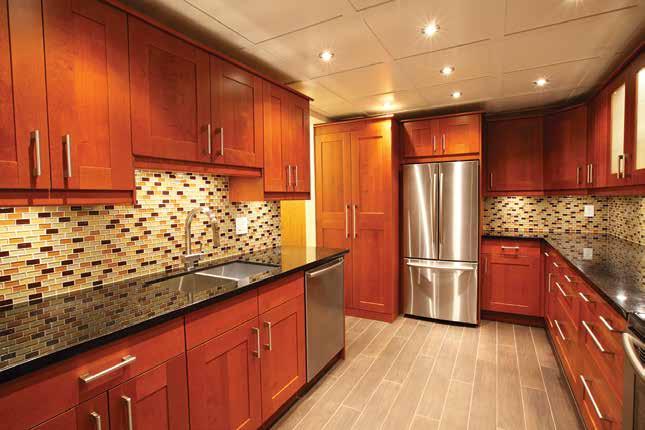
With so much time spent in the kitchen, it’s easy to see how homeowners might grow a little bored by these rooms. The cost of a kitchen remodel won’t be cheap, as the home improvement resource Angi.com notes that the typical cost of such a project in the United States is between $13,000 and $38,000. Angi.com estimates even indicate that a high-end remodel could cost homeowners as much as $61,000. That’s beyond many homeowners’ budgets. But the good news is that there are many quick and easy, not to mention less expensive, ways to give a kitchen a new look.
• Repaint and restyle the cabinets. Cabinet space is an undeniably precious commodity in a kitchen, especially as more and more homeowners embrace their inner chef and cook more complicated meals at home. After all, the more expansive a home chef’s culinary repertoire, the more space that person needs to store all the tools of the cooking trade. A full cabinet replacement is unnecessary if the cabinets are still functional and not overcrowded, so repainting them can be a great way to give the kitchen a new look while keeping costs reasonable. During the painting project, homeowners can install new cabinet knobs and/ or drawer pulls to freshen up the style of the cabinets even further.
• Install under-cabinet lighting. Another inexpensive way to give a kitchen a new look is to install under-cabinet lighting. Under-cabinet lighting serves both an aesthetic and practical purpose. From a purely aesthetic standpoint, under-cabinet lighting can make a kitchen feel more warm and keep the kitchen illuminated when meals aren’t being prepared and homeowners don’t want to have their overhead lights on but still want to be able to navigate the kitchen safely. During meal prep, under-cabinet lighting can illuminate counters so it’s easier to chop, peel and perform other prep tasks.
• Replace existing backsplash. Replacing backsplash is another simple, inexpensive and effective way to give a kitchen a new feel. Homeowners can opt for something neutral that won’t upset their existing decor or go with a more bold backsplash that immediately draws the attention of anyone who enters the room. This simple job can be done by the average do-it-yourselfer and the cost of new backsplash won’t break the bank.
• Replace existing seating. Whether you have an island countertop with bar stools or a breakfast nook with cushioned
seats, replacing the seating is a budget-friendly job that can create a new look when entering the room. Countertop bar stools come in many styles, so giving this area of the kitchen a new feel can be as simple as shifting from classic, high-back stools to more modern swivel stools with a chrome base. For the breakfast nook, replacing a light-colored bench cushion with a bolder alternative can instantly transform the look of the space.
Kitchen remodels can break the bank. But there’s a host of budgetfriendly ways for cost-conscious homeowners to revitalize these popular spaces in their homes.
Quick and easy ways to give your kitchen a new look


our indoor space can be a welcoming respite from the hustle and bustle of everyday life during the winter months.
Would new paint on wood furniture, cabinets, doors or trim be brighter (or more tranquil)? How about a new live edge or other accent table or new legs for an existing table? Do closets need a redo to add storage? Could the home office use shelving? Or maybe space exists for a family game area? The possibilities are endless; you just need the right tools and supplies.
Below are some tools and supplies and how-to tips for assembly and building projects. There’s also some useful tips for coloring or recoloring wood furniture, cabinets and other pieces with stains and paints.





Live Edge Timber Co. Rustic Maple Slabs and Rhombus Slab Legs come predrilled and ready for assembly to create furniture like the coffee table pictured here.
DIY Hairpin Legs in black and raw steel are an easy way to add a modern look to a tabletop or slab.
Festool’s T18 Cordless Drill Plus Set features a brushless ECTEC motor and electronic torque setting for precise screw driving and drilling wood or steel. The set includes a belt clip, two 4.0 AH HighPower battery packs, Rapid Charger TCL 6 and Systainer SYS3 M 187.
The Kreg Pocket-Hole Jig 520Pro makes joinery quick and easy. All you need are a drill/ driver and screws.
A Gyokucho Ryoba Razorsaw is a handy general purpose saw
that has rip teeth on one edge and crosscut teeth on the other side.
Bore shelf pin holes on 32 mm spacing quickly and accurately using the 1/4” Kreg Shelf Pin Jig or the 5 mm Kreg® Shelf Pin Jig. Both are compatible with face frame and frameless cabinets, with alignment windows for added versatility.
For comfortable hand sanding, choose the Preppin’ Weapon Sanding Block Kit. Add power with the cordless Skil Powercore Brushless 20V Random Orbital Sander that can tackle refinishing wood furniture, cabinetry rehab and more.
To remove paints and other coverings, Blue Bear Soy Gel Paint & Urethane Stripper is a handy helper.
Krud Kutter Prepaint Cleaner TSP Substitute cleans and deglosses surfaces so paint or stain will adhere better to the surface being covered.
If you are recoloring or finishing for the first time, General Finishes Gel Stains and General Finishes Milk Paint are easy to use. Gel Stains come in 15 colors, while Milk Paint is available in 33 colors. Follow General Finishes’ instructions for prep, application, and topcoats for paints and stains to avoid any yellowing issues and to ensure the best results over time.
There are many other available topcoat products. When choosing and using a topcoat, follow the manufacturer’s directions closely to avoid disappointment over changes in color or other undesirable results.


— The Washington Post

Agrand entryway simply wouldn’t be complete without an impressive front door. A front door can dazzle guests and create a homeowner’s desired vibe before anyone even steps inside, which only underscores how important the choice of door style can be.
When shopping around for a new front door for their homes, homeowners can consider the many popular styles as they seek to choose one that fits an existing scheme or use a new front door as a springboard to a redesigned home interior.
• Farmhouse: Farmhouse doors are not all one and the same. Traditional farmhouse doors provide a rustic look that’s become popular in home decor over the last decade or so. Modern farmhouse doors are a little less rustic because they incorporate more contemporary elements into their design. Each option is ideal for homeowners who aspire to create a farmhouse vibe in their home interiors and exteriors.
• Modern: Modern front doors tend to boast a bold look and many are made up of large glass panels. Some homeowners prefer modern front doors because the glass in them allows lots of natural light into their home’s interior.
The added light in the entryway appeals to homeowners who want to brighten up these spaces, which tend to be dark in homes with more traditional doors.
• Traditional: Traditional front doors may be the most recognizable to today’s homeowners. Often solid wood but sometimes enhanced with glass, traditional doors may feature subtle, yet ornate designs. Traditional front doors might feel out of place in modern or rustic homes, so they’re generally best suited to homes with owners that prefer more traditional decor inside their homes.
• Custom: It’s important that homeowners recognize they need not pigeonhole themselves into a particular design style for their front doors. Custom front doors may be costly, but many door manufacturers or contractors customize front doors. Custom doors may suit homeowners’ with unique ideas about decor, and some can even mimic other popular styles while still featuring subtle differences. For example, homeowners can request an arched double door that, while unique, features many of the same qualities that characterize traditional doors, including ornate designs.
A front door can greatly influence the first impression people get of a home. That makes it worth homeowners’ time and effort to explore the many different front door styles now available.








Moving season is almost over. But if you’re one of the many people settling into a new home right now, you might feel like the furniture-buying season is just getting started. And that can get expensive.
After paying rent, a security deposit or mortgage down payment — plus all the costs associated with moving — furniture can come as an afterthought, leaving a less-thanideal budget for the items that make your new place feel like home.
Even with lower-cost items from budget-friendly retailers like Amazon and Target, furnishing an entire space gets costly. And if you want higher-end items, a premium couch or bedroom set alone can run you several thousand dollars.
To save on furniture, try turning to your community and peer-to-peer resale platforms to find quality secondhand pieces, and also spacing out your purchases strategically. First, see what you can get for free
Before you venture into the Ikea maze or go down a rabbit hole of online shopping, see what your local community has to offer. Ask people you know if there’s anything they’re getting rid of.
“Your friends and family may be moving, too,” says Henna Noor, a full-time student at the University of California, Irvine. Noor recently moved into her first apartment with a furniture budget of under $700 and scored a free couch from her girlfriend’s parents. “It might benefit them to get rid of an item without having to pay to move it or try to sell it before they go.”
Don’t be afraid to talk to your neighbors or make a request on social media; the people in your life are likely happy to help you
navigate this exciting life change. Many neighborhoods also have “Buy Nothing” Facebook groups you can join to give and receive household items. However, you’ll likely need to find a way to transport the items, possibly by renting or borrowing a truck, or getting a friend to help you.
Peer-to-peer resale platforms like OfferUp, Letgo and Facebook Marketplace feature thousands of secondhand items. You might be able to find some hidden gems sitting within a 5-mile radius of your new place.
“There are limited options at a store like Ikea,” says Miranda Escobar, a marketing manager at a tech startup in New York City , who moved from Manhattan to Brooklyn in April. “A peer
marketplace opens you up to different, unexpected furniture styles.”
Escobar’s go-to is Facebook Marketplace, where she searches a single keyword like “dresser” and then refines the results by color, material, price and location. For example, she might search for wood items under $50 within 2 miles of her new address.
However, some locales have more listings than others, and it can be time-consuming to sort through the results. Not all items are priced to sell, either; some sellers are more motivated by making a profit than getting rid of old items.

“It can take hours of digging to find the true steals,” says Noor. Noor checked the OfferUp app daily for a week before her move, keeping an eye out for fresh
listings from users who needed to get rid of items quickly.
If you’re shopping at peer-topeer marketplaces, garage sales or estate sales, take the opportunity to bargain. Note that the seller is often trying to get rid of the item, but also try to offer a price within a reasonable range — lowballing may not get you a response.
“I always compare with similar items on the market,” Escobar says. If it’s a name-brand or vintage piece, look up what it would cost to buy new or what other resellers are listing it for. Knowing the ballpark value of the item you want can help you negotiate more confidently with a seller and steer clear of listings with unreasonable prices. — NerdWallet
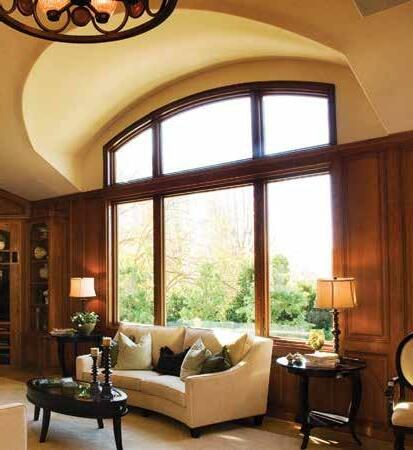

for fine antiques, we also love perusing Facebook Marketplace, Craigslist, consignment stores and estate sales.”
Other options include eBay, Etsy and ZZ Driggs, which both sells and rents vintage furnishings. You might not be able to swing the $3,000 for a James Mont Art Deco leather lounge chair, but maybe you can afford its $75 monthly rent for a year.
One source that used to be reserved for the design trade has opened its doors to the public in New York City. The Gallery @ 200 Lex is 33,000 square feet of vintage and antique furniture from dozens of dealers. You can also see what The Gallery’s dealers have posted on Incollect.
Ciolino and Armato say they’ve seen a “furniture flipping” trend.

“While house-flipping may require a large amount of cash and time, many furniture flippers are taking worn pieces and either revitalizing them to their original glory or creating a completely new piece by re-staining, painting and replacing the hardware, and then selling them or keeping

them for their own homes,” says Ciolino.

He says it’s usually best to leave reupholstering to the pros.
Wooden items, especially those without intricate details, are perfect for beginner DIYers, says Armato. “Dressers or side tables can typically use just a light sanding, paint or stain if you like, and a coat of sealant like clear enamel or linseed oil. Some metal pieces like outdoor iron chairs are also very DIY-friendly.”
Mary Maloney of Bee’s Knees Interior Design in Hopkinton, Massachusetts, reawakens old wooden furniture by painting it in cheery hues.
“My mom taught me how to spot great pieces in need of a little love and reinventing,” Maloney says. “I still treasure my first purchase – a sweet little dresser that I found on an antique excursion with her over 40 years ago. When I was updating our guest bedroom, I painted it a sunny yellow.”
Antique furniture usually needs a gentle overall cleaning before any removal or covering of unwanted scuffs and scratches. Unless antique lamps have already been rewired, it’s best to bring them to a pro. And you’ll probably want to update the shades.





















